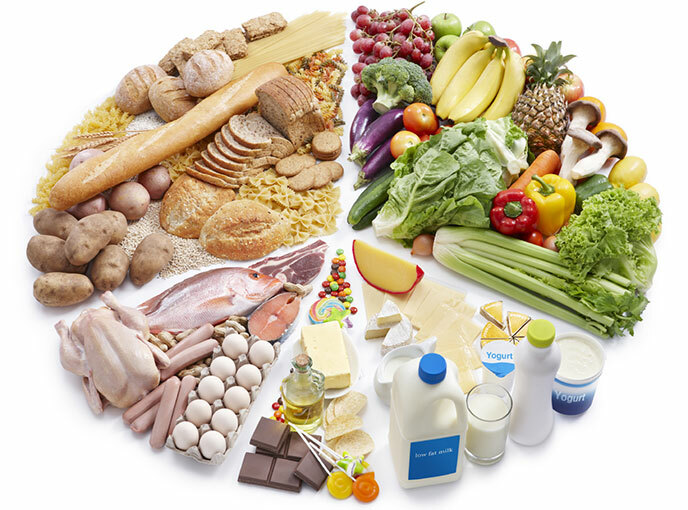Gluten-Free Diet
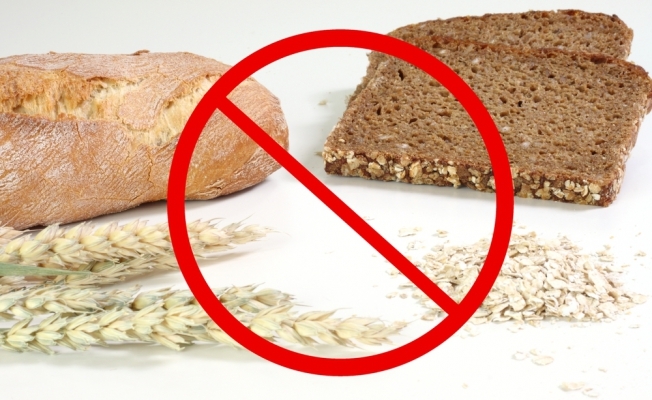
A gluten-free diet involves the complete exclusion of food from human diets in which a complex protein compound is present, gluten, i.e., gluten.
Gluten is present in all bakery products from oat, barley and rye flour, in pasta, flakes and beer.In addition, gluten for imparting a viscous consistency or elasticity of the mass is added to foods such as sweets and other confectionery products, ketchup, soy sauce and bouillon cubes.The technology of obtaining gluten is extremely simple.When kneading wheat flour on water, the starch dissolves, and the insoluble fraction( actually, gluten) precipitates.
Note: requires careful attention to each label of patients with celiac disease. Gluten can be designated by the manufacturer on the package as textured or hydrolyzed vegetable protein, and also as "modified food starch."
Table of contents: Why is the gluten-free diet necessary?What is celiac disease?Is it possible to eat oats while observing a gluten-free diet?Gluten and diabetes Diabetes consequences of the dietWhy do I need a gluten-free diet?
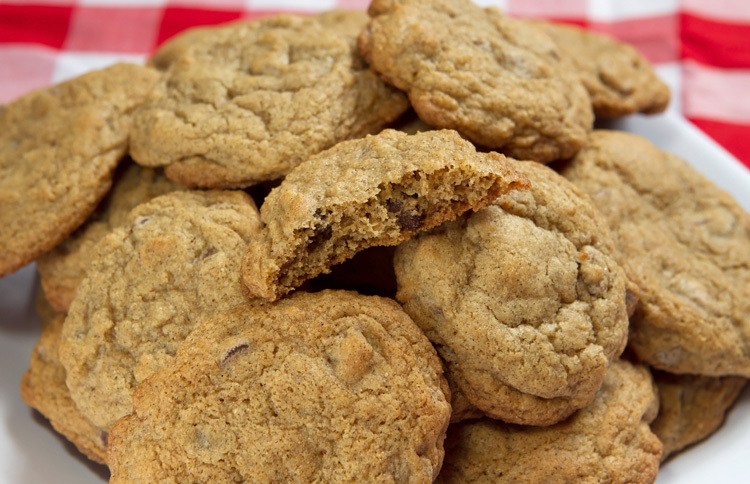 The gluten-free diet does not refer to hypocaloric, but to therapeutic;It is indicated to patients with congenital intolerance to gluten , as well as to people suffering from such a digestive system disease as celiac .Strict adherence to the prescribed diet allows you to stop the clinical symptoms of the disease and prevent the development of complications.
The gluten-free diet does not refer to hypocaloric, but to therapeutic;It is indicated to patients with congenital intolerance to gluten , as well as to people suffering from such a digestive system disease as celiac .Strict adherence to the prescribed diet allows you to stop the clinical symptoms of the disease and prevent the development of complications.
Important: Doctors are not recommended to try to lose weight with this diet.To drop the extra pounds, limiting the consumption of flour, is really quite realistic, but you need to give up some other products.The use of this treatment technique without prior consultation with a nutritionist can lead to all sorts of complications, since the body loses not only calories, but also a number of necessary substances.
In the first stages, significant restrictions in the diet are very difficult to transfer, since it is necessary to exclude the consumption of habitual and very widespread products.
What is celiac disease?
Celiac disease( gluten enteropathy) is a disease characterized by impaired absorption processes in the small intestine and atrophic changes in its mucosa.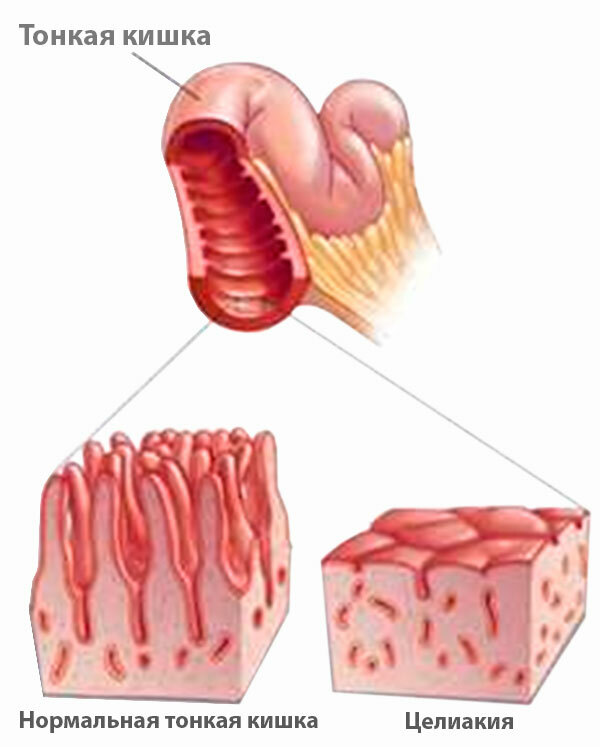
According to the accepted clinical classification, it is customary to differentiate between true celiac disease and celiac disease.The development of the syndrome is possible on the background of irrational antibiotic therapy, as well as due to pathologies of intestinal development, and after the transferred infectious diseases.The first clinical manifestations of celiac disease are observed in young children, when in addition to breast milk they begin to receive complementary foods with products that include gluten.
Important: usually shows itself when the child is 6-12 months old.
Celiac dysfunction develops with celiac disease.The patient's chair is quick, light with a pungent odor.In feces of a grayish shade, fat and mucus may be present.At laboratory researches in most cases the presence of pathogens is not revealed.
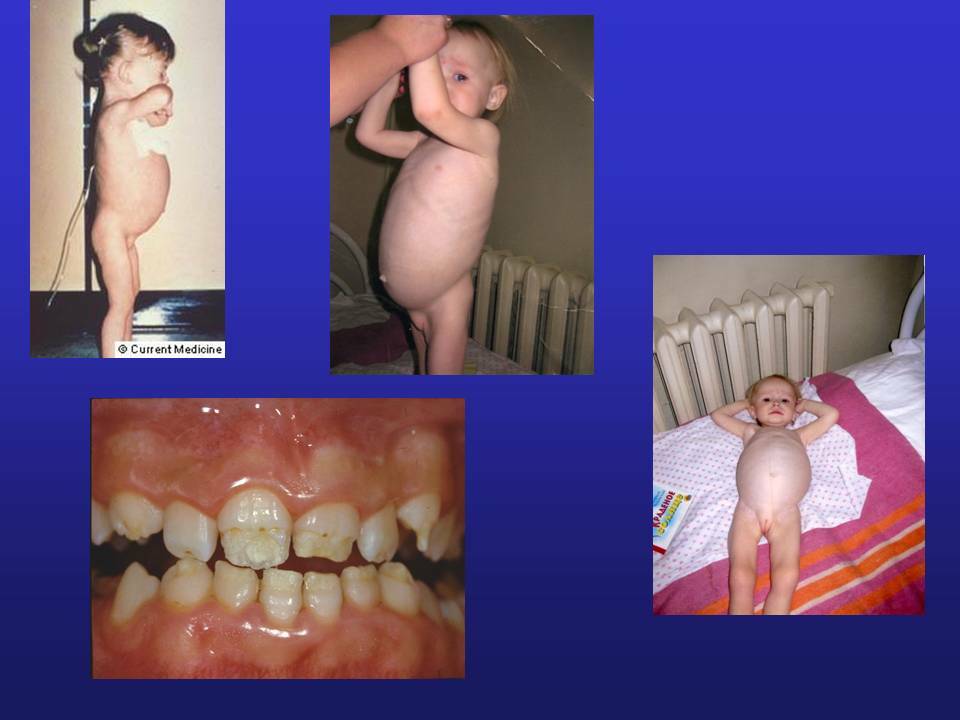
The child's appetite usually worsens;They become sluggish and apathetic and quickly lose weight.As the pathology progresses, dystrophy develops, and the abdomen increases in size.The clinical picture is characterized by polymorphism.
Symptoms of celiac disease:
- of stool disorder;
- depletion;
- constant thirst;
- muscular hypotension;
- anemia;
- abdominal pain after eating( localized in the navel region);
- general weakness;
- bright coloration of mucous membranes;
- swelling of the feet;
- intestinal atony;
- pseudoascitis;
- softening of bone tissue;
- spontaneous bone fractures on the background of osteoporosis( not always);
- signs of multivitamin deficiency.
Note: characteristic clinical manifestations of hypovitaminosis are inflammation of the mucous membranes of the mouth, dryness and peeling of the skin, as well as brittle nails and non-carious defects in the enamel of the teeth.
On the background of celiac disease, the syndrome of universal malabsorption develops.Violated transport and metabolism of essential amino acids, as well as absorption of vital microelements, fats, disaccharides and vitamins.
Important: the child shows developmental abnormalities;One of the signs of long-term celiac disease is stuntedness.
Patients are characterized by mood changes, high nervous excitability, negativism and isolation.
Celiac disease is characterized by a wavy current.It is quite often that a secondary bacterial infection takes place leading to complications.If adequate measures are not taken in a timely manner, a lethal outcome is not ruled out.
Important: has a significantly higher risk of developing celiac disease in people with type 1 diabetes.Pathology is diagnosed in every tenth diabetic.
Medical examination
In order to find out if you need a gluten-free diet, if there is bloating, pain and dyspepsia( diarrhea) after consuming foods with fiber, you should consult a gastroenterologist and undergo a complete examination.The reason for going to the doctor is also a significant reduction in body weight and even exhaustion against a background of normal nutrition, as well as a chronic feeling of fatigue.These symptoms can indicate that the body loses nutrients, which in turn is associated with a violation of their absorption in the intestine.
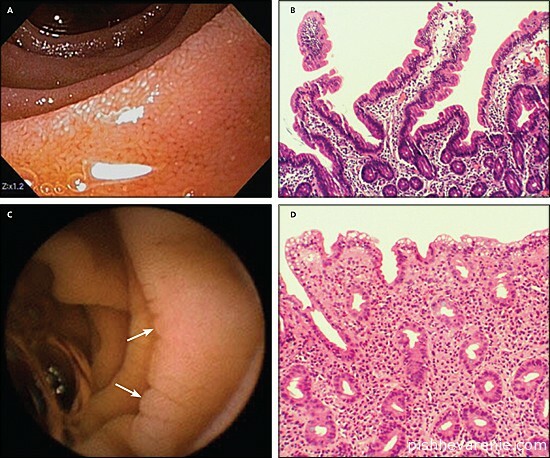 In case of suspected celiac disease, the specialist first directs the patient to a blood test.It is important that the patient does not stop consuming conventional products until the results of laboratory tests are obtained.The analysis should reveal the characteristic antibodies, and at the "early" start of compliance with the gluten-free diet the results may be distorted.If you refuse from food containing gluten, the level of antibodies gradually decreases, and after 3-6 months they can not be detected.
In case of suspected celiac disease, the specialist first directs the patient to a blood test.It is important that the patient does not stop consuming conventional products until the results of laboratory tests are obtained.The analysis should reveal the characteristic antibodies, and at the "early" start of compliance with the gluten-free diet the results may be distorted.If you refuse from food containing gluten, the level of antibodies gradually decreases, and after 3-6 months they can not be detected.
To clarify the diagnosis, a biopsy of the intestinal mucosa may be necessary.
Unfortunately, at present no tests have been developed to determine the degree of gluten intolerance.
An important difference of celiac disease from individual gluten intolerance is that in the second case the patient's stomach can not suffer.The symptomatology of these pathologies is largely similar.Patients complain of digestive disorders, chronic fatigue and "causeless" weight loss.
Specific features of the gluten-free diet
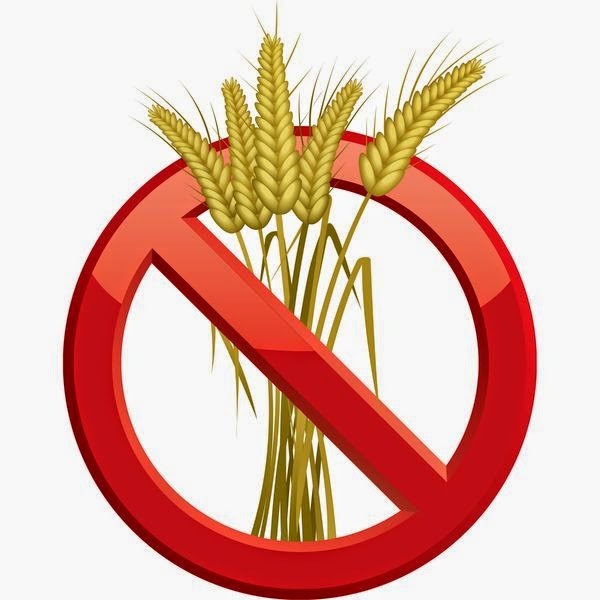 The elimination of gluten-free products from the diet is associated with serious changes in the body.A person needs some time to get used to the necessary changes in the nature of nutrition.
The elimination of gluten-free products from the diet is associated with serious changes in the body.A person needs some time to get used to the necessary changes in the nature of nutrition.
There are many delicious and healthy food products, of which there is absolutely no gluten.There are even special types of bread and pasta without gluten.
List of products approved for gluten-free diet:
- meat;
- fish;
- eggs;
- bird;
- dairy products( most);
- any vegetables and fruits;
- legumes;
- nuts;
- seeds.
With regard to meat products and fish, the restriction applies only to animal products baked in dough or fried in breadcrumbs.
From hydrocarbon-containing products, patients are allowed:
- rice;
- buckwheat groats;
- soybean;
- millet;
- corn;
- sorghum;
- amaranth;
- movies;
- potato flour;
- tapioca.
Foods that can not be consumed:
-
 solid wheat;
solid wheat; - sprouted wheat;
- barley;
- rye;
- wheat bran;
- mango;
- bread;
- matzo;
- pasta;
- cookies and other confectionery products made of flour;
- oatmeal;
- couscous;
- some types of sausages;
- chips;
- snacks;
- beer;
- modified food starch;
- instant cooking rice;
- broth cubes;
- yogurts;
- mayonnaise;
- crab sticks.
When buying sauces and gravy, you need to familiarize yourself with the composition of the product and make sure that gluten is not included in it.
Can I eat oats, observing a gluten-free diet?
Oats are a cereal crop in which the gluten is initially absent.Gluten may appear in the product during collection and processing.More recently, nutritionists and gastroenterologists advised all patients with celiac disease to refrain from consuming oats along with such cereals as rye and wheat.Currently, oats can be grown isolated from other crops.The packaging must contain "gluten-free" labeling.
It is recommended that the doctor be informed that you started using oatmeal.
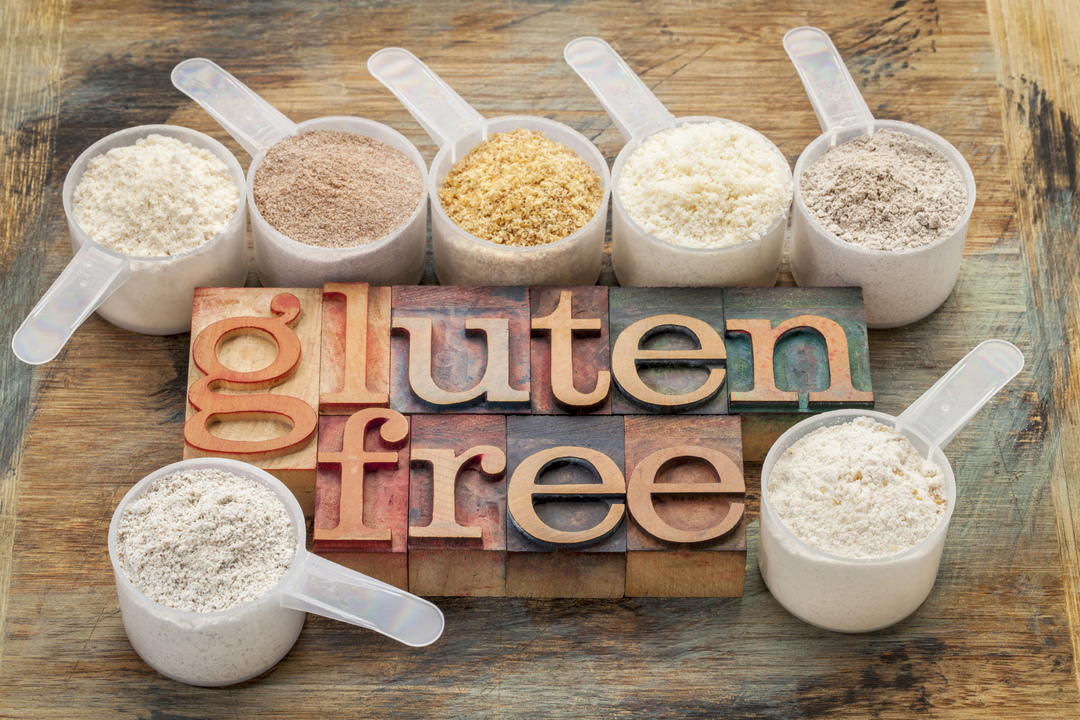
Consumption of this undoubtedly useful product is necessary because it is able to provide the body with sufficient fiber and many substances necessary for normal life.However, adhering to the gluten-free diet, it is advisable to limit consumption of oats, and include in the diet no more than half a cup of dry grain a day.
Gluten and Diabetes Mellitus
People who are diagnosed with diabetes mellitus and celiac disease in parallel and who have started to adhere to a therapeutic diet require a careful calculation of the amount of carbohydrates.Change in the nature of nutrition may require adjustments in the dosage of insulin and other hypoglycemic drugs.
Patients need to continue the diet developed for diabetics, but replace all gluten-free foods with gluten-free ones.In food without gluten( in particular - in special types of bread) carbohydrates often contain a little more.In this case it is advisable to reduce the volume of portions.
Consequences of the
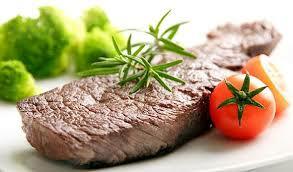 In most patients who adhere strictly to the indicated therapeutic diet, the symptoms of celiac disease disappear, and the likelihood of complications is almost zero.Positive changes are observed after 3 months( body weight gradually returns to normal).
In most patients who adhere strictly to the indicated therapeutic diet, the symptoms of celiac disease disappear, and the likelihood of complications is almost zero.Positive changes are observed after 3 months( body weight gradually returns to normal).
Histological changes in the intestine disappear after 2-3 years.In some cases, adjustments to the diet are insufficient to treat this serious disease;The doctor may additionally prescribe medication.
Important: adhere to a gluten-free diet for patients with gluten enteropathy needed throughout life!
When a diet is observed, fewer vitamins and trace elements enter the human body, since many of them are present in large amounts in products with gluten.
Consult a dietitian, and try to adjust the diet so that there is no shortage of nutrients.
Special attention should be paid to the level of consumption of the following elements and compounds:
- fiber;
- vitamins B1 and B2;
- nicotinic acid( PP);
- calcium;
- iron.
Calcium deficiency can be compensated by consuming a sufficient amount of milk and dairy products, and iron is heavily contained in meat.Fiber is preferably obtained with fresh vegetables and fruits.
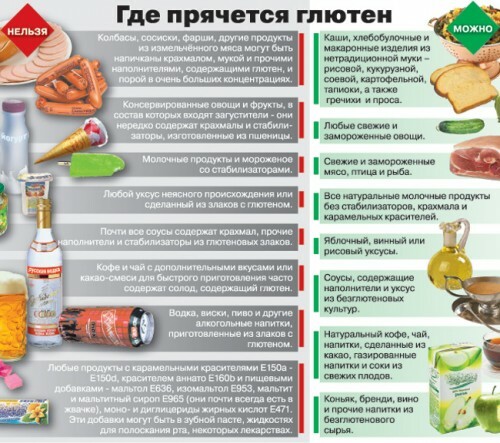
In case of accidental violation of the diet, the symptoms characteristic of celiac disease - abdominal pain and stool disorders - may develop.Even if there are no clinical manifestations, the negative effect of gluten on the intestines of patients with celiac disease still occurs.
How to avoid mistakes while observing a gluten-free diet?You will receive useful recommendations by watching the video review:
Trofimova Yaroslava, dietitian

